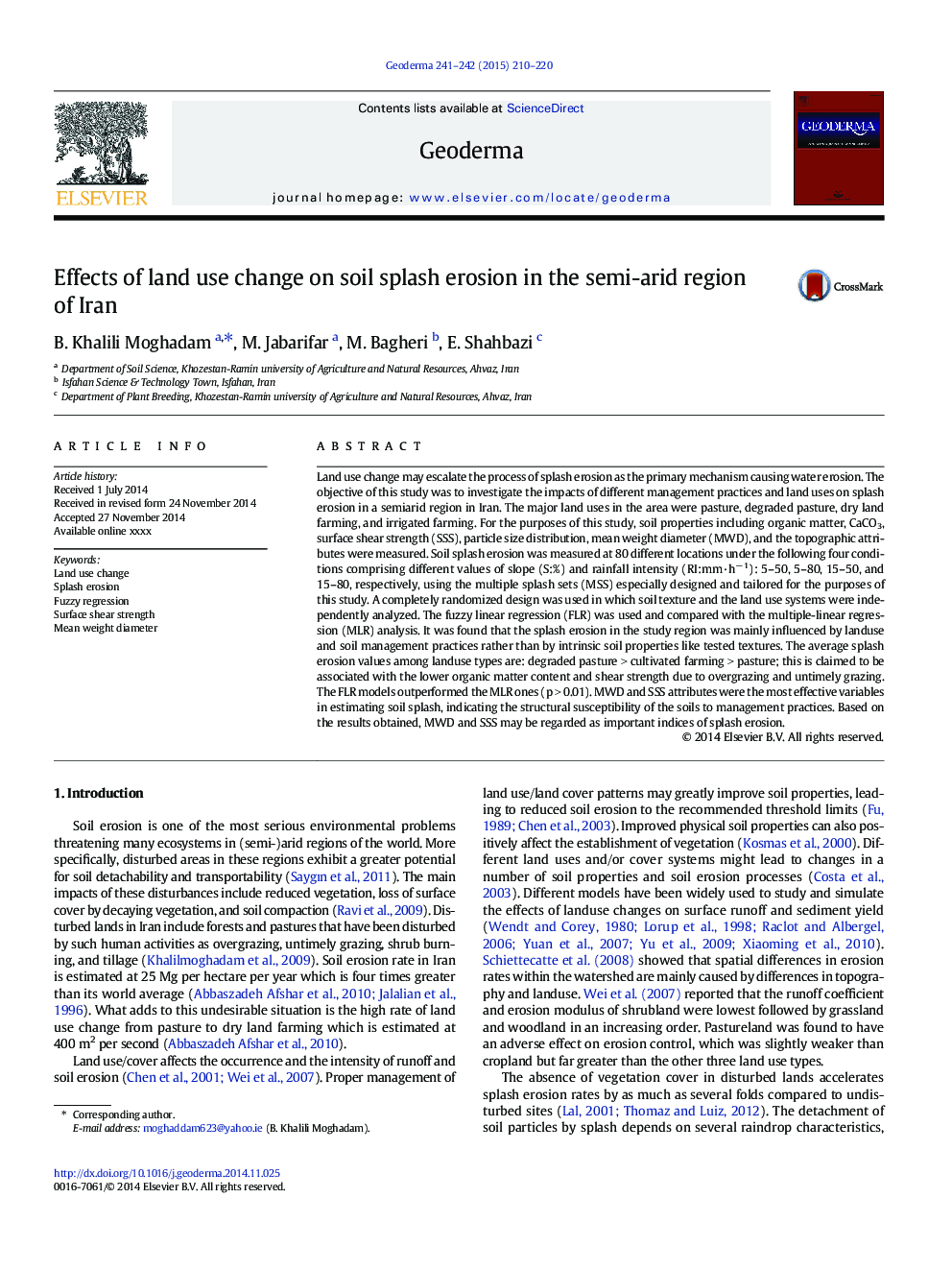| Article ID | Journal | Published Year | Pages | File Type |
|---|---|---|---|---|
| 6408604 | Geoderma | 2015 | 11 Pages |
Abstract
Land use change may escalate the process of splash erosion as the primary mechanism causing water erosion. The objective of this study was to investigate the impacts of different management practices and land uses on splash erosion in a semiarid region in Iran. The major land uses in the area were pasture, degraded pasture, dry land farming, and irrigated farming. For the purposes of this study, soil properties including organic matter, CaCO3, surface shear strength (SSS), particle size distribution, mean weight diameter (MWD), and the topographic attributes were measured. Soil splash erosion was measured at 80 different locations under the following four conditions comprising different values of slope (S:%) and rainfall intensity (RI:mm·hâ 1): 5-50, 5-80, 15-50, and 15-80, respectively, using the multiple splash sets (MSS) especially designed and tailored for the purposes of this study. A completely randomized design was used in which soil texture and the land use systems were independently analyzed. The fuzzy linear regression (FLR) was used and compared with the multiple-linear regression (MLR) analysis. It was found that the splash erosion in the study region was mainly influenced by landuse and soil management practices rather than by intrinsic soil properties like tested textures. The average splash erosion values among landuse types are: degraded pasture > cultivated farming > pasture; this is claimed to be associated with the lower organic matter content and shear strength due to overgrazing and untimely grazing. The FLR models outperformed the MLR ones (p > 0.01). MWD and SSS attributes were the most effective variables in estimating soil splash, indicating the structural susceptibility of the soils to management practices. Based on the results obtained, MWD and SSS may be regarded as important indices of splash erosion.
Related Topics
Physical Sciences and Engineering
Earth and Planetary Sciences
Earth-Surface Processes
Authors
B. Khalili Moghadam, M. Jabarifar, M. Bagheri, E. Shahbazi,
